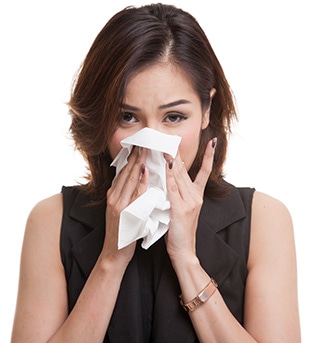Protect your family and yourself against the flu
Don’t let the flu catch you. Get your free flu shot today!
 FLU SHOTS
FLU SHOTS
DID YOU KNOW…
• The flu (influenza) is a contagious virus that anyone can get.
• The most effective way to decrease complications and reduce the impact of the flu is to get a preventative vaccine shot!
![]()
There are several things you can do to protect yourself from catching it, or spreading it to others. The flu shot is your best defense.

The most effective way to decrease complications and reduce the impact of the flu is to get a preventative vaccine shot. The North American vaccine is developed each year to work against different strains of influenza virus, based on trends seen in the Southern Hemisphere. The best time for vaccination is early October to mid-November. Your trained Winchester Pharmasave pharmacist can administer the annual flu vaccine to anyone five years of age and older. Come in today and get yours!
The flu shot is:

- safe (including for kids and if you are pregnant or breastfeeding)
- free
- available from your doctor or nurse practitioner, at Winchester Pharmasave and other participating pharmacies and local public health units across the province
- proven to reduce the number of doctor visits, hospitalizations and deaths related to the flu
- different each year because the virus changes frequently – so you need to get it every fall
Flu season runs from late fall to early spring. Be sure to get your shot as soon as it is available because it takes two weeks to take effect.
Other tips to avoid getting–and spreading–the virus
Wash your hands often
- even after getting the flu shot, washing with soap and water for at least 15 seconds helps prevent the spread of the virus, which can live on your hands for up to 3 hours
- if soap and water are not available, use a hand sanitizer (gel or wipes) with at least 60 alcohol
Cover your mouth when you cough or sneeze
- use a tissue and throw it out rather than putting it in your pocket, on a desk or table
- if you don’t have a tissue, cough into your upper sleeve
Don’t touch your face
- the influenza spreads when people with the flu cough, sneeze or talk and droplets enter your body through your eyes, nose or mouth
Stay at home when you’re sick
- viruses spread more easily in group settings, such as businesses, schools and nursing homes
Clean and disinfect surfaces and shared items
- viruses live on hard surfaces like counter tops, door handles, computer keyboards and phones for up to 8 hours
Who is most at risk
Complications from the flu can include pneumonia, which is a serious illness. Flu causes about 12,200 hospitalizations and 3,500 deaths in Canada each year.Some people are more vulnerable to complications or hospitalization from the flu:
- Babies under 6 months are too young to get the flu shot, but they’ll get some protection if their parent gets the flu vaccine while pregnant
- Children under five years of age because their immune systems are developing, and their airways are small and more easily blocked
- People over 65 years old, because their immune systems are weaker and they may have an underlying condition that increases their risk
- Pregnant people, because their immune system, heart and lungs change – especially later in pregnancy – and makes it harder to fight infection
- People with underlying health conditions, such as asthma, heart disease or diabetes
Symptoms
Symptoms typically appear 1 to 4 days after you’ve been exposed to the virus – but it’s contagious right away, so you can still catch it from someone who shows no symptoms yet.
 Most otherwise-healthy people will recover within 7 to 10 days.
Most otherwise-healthy people will recover within 7 to 10 days.
You may have caught the virus if you have:
- fever
- chills
- cough
- runny eyes
- stuffy nose
- sore throat
- headache
- muscle aches
- extreme weakness and tiredness
- loss of appetite
Some people may have diarrhea or vomit, though this is more common in children than adults
Flu vs. common cold
The symptoms of the flu and the common cold can be very similar but, unlike a case of the common cold, the flu can lead to serious health problems like pneumonia.
Use this chart to help determine if you have a cold or the flu.
| Symptom | Cold | Flu |
|---|---|---|
| Fever | Rare | Common, high (102°F – 104°F or 39°C – 40°C). Starts suddenly, lasts 3 to 4 days. Not all people with flu |
| General aches and pains | Sometimes, mild | Common, often severe |
| Muscle aches | Sometimes, usually mild | Often, can be severe |
| Feeling tired and weak | Sometimes, mild | Common, may last 2 to 3 weeks or more |
| Fatigue (extreme tiredness) | Unusual | Common, starts early |
| Sneezing | Common | Sometimes |
| Complications | Can lead to sinus congestion or earache | Can lead to pneumonia and respiratory failure, worsen a current chronic respiratory condition, be life-threatening |
| Chest discomfort and/or coughing | Sometimes, mild to moderate | Common, can become severe |
If you get the flu
Be sure to:
- stay home and get plenty of rest
- drink lots of fluids
- avoid caffeine
- speak to your doctor or nurse practitioner about over-the-counter medications that can help you feel better (basic pain or fever relievers), but do not give acetylsalicylic acid (ASA or Aspirin®) to children or teenagers under the age of 18
- treat muscle pain using a hot water bottle or heating pad — apply heat for short periods of time
- take a warm bath
- gargle with a glass of warm salt water or suck on hard candy or lozenges
- use spray or saline drops for a stuffy nose
- avoid alcohol and tobacco
Call your doctor or nurse practitioner if:
- you don’t start to feel better after a few days
- your symptoms get worse
- you are in a high-risk group and develop flu symptoms
You can also call Telehealth at 1-866-797-0000 to talk to a registered nurse 24 hours a day, 7 days a week. You do not need to provide your OHIP number and all information is confidential.

